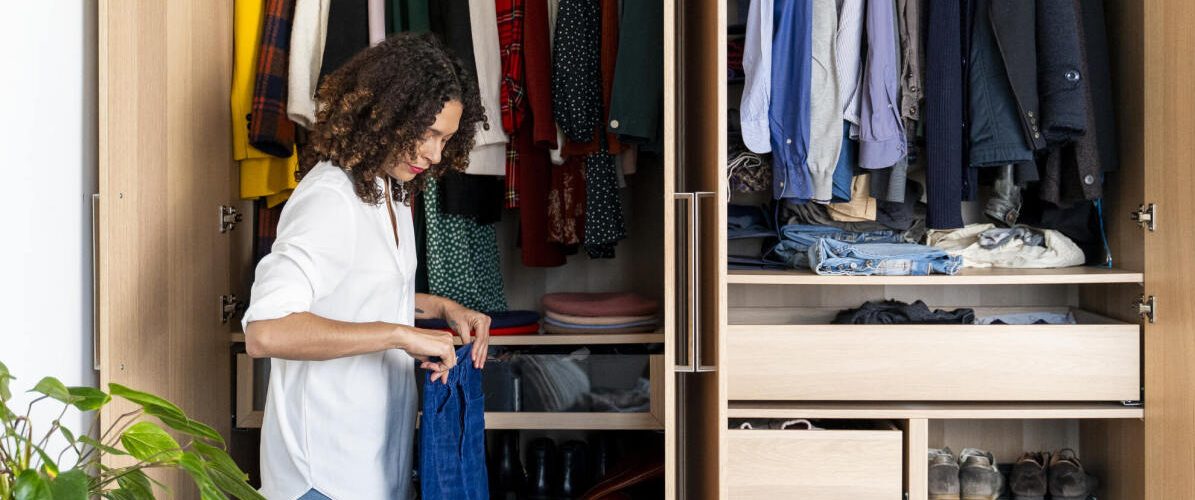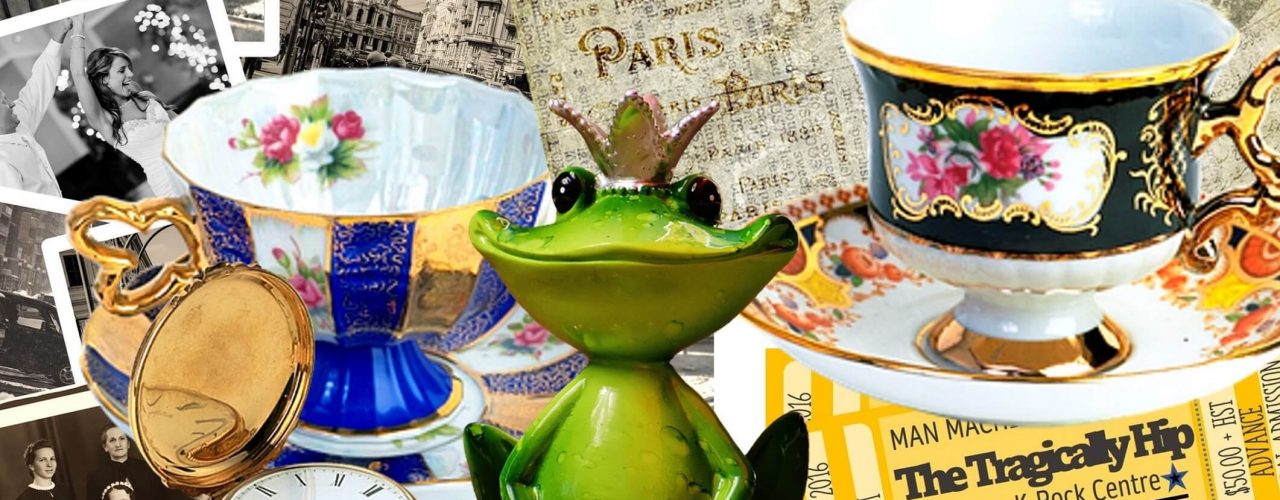Menu

Are you currently selling your home?
Planning on downsizing soon?
Just want to simplify your life?
Decluttering is an essential first step in any of these situations.
Sorting through your entire home and all your belongings can seem like a monumental task. It’s overwhelming, making us exercise physical, mental and emotional muscles that we might not have used in years (or ever!).
Does decluttering your whole home seem like too big of a project? Are you starting to panic just thinking about it? Relax, just breathe. It doesn’t have to be that way.
First off, a Disclaimer: We didn’t invent these ideas. Instead, we did a deep dive into a lot of the advice available in books and on the internet. We discovered that most all of the different methods that experts recommend can be boiled down to two main approaches to this big task. Here we present them, along with the pros and cons of each method. We throw in those great tips and tricks from the pros, along with a dash of our own experience.
It’s up to you to adopt whichever approach suits your personality and your particular situation. Once you’ve done that, make your plan to regain control over your belongings, your space and your time.
With a great plan, you can live in a home that is:
Ready? Let’s begin.

In decluttering methods using this approach, the idea seems to be that by gathering all the items of a single type together at once, you are motivated to get rid of a lot of items just by seeing the sheer volume of your belongings. There is some shock value involved! That said, we do tend to store similar items in different places around our homes, so bringing everything together helps you identify favourite items to Keep, as well as worn out or duplicate items (why do I own 12 black tee-shirts?), or that just don’t fit anymore – whether it’s a too snug jacket or the gear for a sport you gave up years ago, but kept “just in case” or a box of videotapes when you no longer own a working VCR.
Fair warning: this method makes a bigger mess before your space gets better, so it is recommended when you can schedule longer periods of uninterrupted work.
For more inspiration, pick up Marie Kondo’s book, The Life-Changing Joy of Tidying Up.
METHOD:
PROS:
CONS:
This is a more gradual approach to decluttering that’s more of a lifestyle than a single big event. The idea is that you are continuously editing and organizing your belongings, right in the place where you find them, so you’re sorting by location rather than category. The theory behind this approach is that decluttering is not a one-and-done task, and keeping your belongings under control is a skill that can be taught, and over time, it develops into a habit, then morphs into a lifestyle. This approach to controlling your belongings rather than letting them control you has a fair amount of behavioural science behind it, and seems to be more successful and sustainable over the long term. There are two big drawbacks: 1) it does not provide the instant gratification many of us are seeking, and 2) it is not a good method to use when you have a hard deadline to meet for the decluttering process. It could be the follow-up plan after an initial big declutter when getting your home ready to sell. It can also be a great way to declutter when your deadline is the holidays that are still months away.
Fair Warning: You will never really be finished decluttering – this method helps you build a habit, then a lifestyle, but since we humans are always acquiring new stuff, decluttering never truly ends. A side benefit is that once you start thinking about how much stuff you have, and the limited space in which to store it, you may find yourself buying less ‘”stuff” home, which slows the pace of clutter build up in your home. That clutter doesn’t grow legs and sneak into your house while you’re sleeping. You carry it home yourself!
For more inspiration, check out the YouTube channels of The Minimalist Mom, Clutterbug, or But First, Coffee.
METHOD:
PROS:
CONS:

It’s common for people with messy homes to describe themselves as procrastinators. They think this is a character flaw that they can’t change, but human psychologists disagree. They don’t even think the tendency to procrastinate is a character trait, but instead it’s a behavioural response to feeling overwhelmed, or being afraid of making the wrong choice. Some experts define procrastination as “delayed decision-making”. If we view our clutter through that lens, it makes it easier to deal with our discomfort and get started on making decisions about our stuff.
Believe it or not, decision-making is a skill you can improve with practice. Although there is such a thing as decision fatigue, it comes into play only when we have to make novel or unique decisions all the time. Decluttering involves more routine decision-making, which is why experts advise you to start with easy, no-brainer type decisions: “Should I keep this almost empty bottle of expired sunscreen?” We build decision-making muscles the same way we build regular muscles, one exercise at a time!
Once you commit to decluttering your space, if you find yourself hesitating over an item, you have two choices:
Often you will have a much clearer answer after asking one or two of these questions. Really, just the fact that you’re questioning this item in the first place means it’s not a clear Keep! item.
To be able to make harder decisions, practice making easier ones first.
“Hmm, my daughter has 300 hair barrettes and scrunchies. Perhaps we only need to keep 10!”
comes before,
“These needlepoint throw cushions my grandmother left me are frayed and don’t suit my style, but I know she went half-blind stitching them by the light of an oil lamp – after working on the farm all day. What will my cousin say when she comes for Thanksgiving and sees I’ve replaced them? I’m afraid I’ll feel guilty about getting rid of them.”
Just listen to your own self-talk. If the answer isn’t obvious, ask yourself what advice you’d give your best friend in the same circumstances. Is there another way to honour your grandmother’s gift?

Maybe by now you’ve chosen the method that will work in your circumstances, depending on your available time frame to finish or on the approach that best suits your lifestyle, but you’re still feeling overwhelmed at the thought of decluttering your entire home. You’re definitely not alone!
If you are selling or moving, have hired a professional company to help, or you have a burning desire to get the decluttering , are hiring a professional company to help, or have more time to devote to the process yourself, the Category Method might be for you. Grab our printable Declutter by Category Checklist that starts you off with basic categories of belongings that many people own. Everyone’s list will be different and specific to them (maybe you collect glass frogs???) so add categories that reflect you and your belongings.
If the idea of a more gradual but long-lasting result appeals to you, you might choose the Location Method, get our printable Declutter by Location Checklist for this approach, and again, we’ve left space to customize it to your home, so if antique teacups are your thing, add them to the checklist under the room where you keep it.
The best approach might be some combination of the two methods. I found the category method best for clothing items, but the location method best for the rest of my home. There are no rules – do whatever works for you. If you try one method and aren’t satisfied, don’t give up! Try the other approach!
This could mean beginning in a smaller room in terms of square footage, or with a smaller category in terms of the number of items to sort through. Go small in terms of emotional weight, too. Leave those glass frogs or antique teacups, along with any other sentimental items, to the end of your process. By that time, repeated practice will have developed some impressive decision-making muscles!

Whichever approach you choose, we highly recommend employing the container method to reduce your belongings count to a manageable level. It’s the way to go if your Keep pile is bigger than what will fit in your space.
When you think about it, your home is not only where you and your family live, it’s also a big “container” for all your belongings. The inside of your home is made up of increasingly smaller containers – floors, rooms, closets, shelves, racks, storage boxes, etc. – you get the picture.
It’s logical that the amount of your belongings that you can keep is limited by the size of the container you have to keep them in. There’s nothing to say you must fill every “container” in your home, but if you try to keep more clothes than what will comfortably fit in your closet, you’re going to have a problem.
DID YOU KNOW?
Real estate professionals and staging experts say your built-in closets, walk-in closets and kitchen cabinets should be only about 75% full when you’re selling your home. Buyers will open doors and cabinets to inspect the storage capacity. You want the insides of your closets and cabinets to feel uncluttered (there’s that word again!) and like there is room for plenty more belongings.
Here’s how you do it: once you’ve made your first pass through your items – let’s use cookbooks as an example – you decide where you’re going to store your cookbooks. This brings us to two important organizing concepts: Store like with like (keep similar items together in the same place, close to where they will be needed), and A place for everything, and everything in it’s place (anything that can’t be put away will just be in the way).
For cookbook storage, for practical reasons, they should probably be kept in or near the kitchen. Maybe you only have a single shelf available for the cookbooks. If your Keep cookbooks fit on that one shelf, fine – you’re finished with this category or location. If not, you need to keep editing the Keep pile until they fit, or you need to find a different “container” for the overflow.
For more on how the container concept fits in (get it?) check out Dana K. White on her YouTube channel, A Slob Comes Clean.

Sentimental items – the things that tug at your heart-strings or instantly bring a loved one’s memory to mind – are different for everyone. For some people, it might be old family photos, while for others, it’s pasta kindergarten artwork made by your grown up kids, or the licence plate from the first car you ever owned. It could be jewelry left to you by a loved one – not quite your style, but you feel you can’t part with it.
Whatever items are the ones that get you in the “feels”, make sure you leave these to the very end of your decluttering process, or at least until you’re really well-practiced at making decisions. If you’re still struggling over old tee-shirts, you’re not ready for this yet!
Finally, be gentle with yourself. If you are still actively grieving and can’t look at your loved ones things without becoming very emotional, it may be too soon to sort through their things. Acknowledge your emotions and decide on the date when you will try again. Trust that you’ll know when the time is right.
This is the first in a series of related blog posts about decluttering your whole house, organizing methods to keep your home decluttered, and deep cleaning your home. If these topics interests you, check back here soon. We’ll link the next blogs in the series as soon as they are posted.
In the meantime, tell us your decluttering story – what worked for you, what didn’t, and whether you were able to keep your home organized and clutter-free after the first big push to get it done. We love to hear your stories!